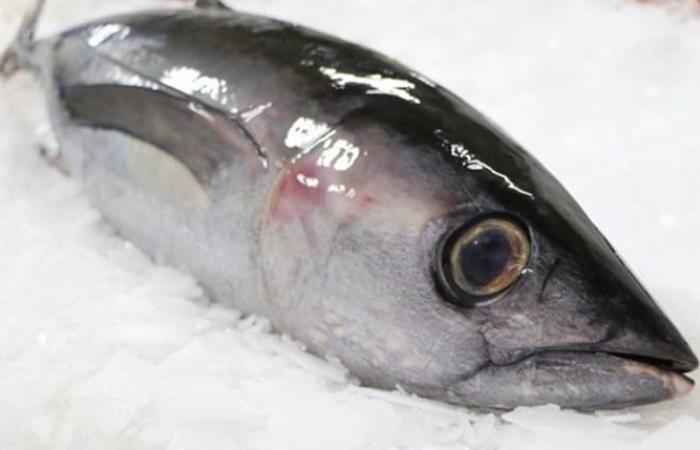A few weeks ago, the end of the fishing agreements between Senegal and the European Union caused a buzz to use the more fashionable term. Statements came from everywhere, from politicians in search of populism to ordinary Senegalese people who are often profane on the subject.
I retain and salute for its true scientific value that of Madam Minister of Fisheries Fatou Dioufwhich hardly surprises me because it comes from a true professional. She said in summary: We are in the process of evaluating these agreements and we are in no hurry and we are waiting for the result to know the pluses and minuses. This is the approach that is needed but in the meantime, can we benefit from the non-renewal of these agreements for Senegal?
My modest self is trying to do an analysis by focusing on what we need to do to benefit from the end of these agreements.
– These agreements mainly concern tuna fishing and to a lesser extent hake. Our contribution will be focused on tuna.
Tuna is part of the Scombridae (family of fish and we note several species in Senegal including Auxis thazard or Auxide (40-55 cm common size),Euthynnus alletteratus or Common turnip (80 – 100 cm ) ,Katsumonus pelamis or Strip-bellied bonito (60 – 70 cm),Fat tuna or bigeye tuna (up to 200 cm),Thunnus albacares ou Thon albacore (200 cm) …
Their main characteristic is their adaptation to fast swimming (40 to even 80 km/h for some.
Tunas carry out trophic migrations (linked to their diet, generally small pelagic fish such as sardinella or yaboye) or sometimes significant reproductive migrations. They are most often gregarious and very voracious and have this exceptional characteristic among fish which is the regulation of the internal temperature of the body which can exceed the ambient temperature by 10 degrees.
These fish are often presented to consumers at market level in a pitiful condition due to the rapid deterioration of certain organoleptic quality criteria;
Many Senegalese people are not fond of eating tuna for the following reasons:
Tuna, with handling and exposure to the sun and being an oily fish, sees the texture of its flesh lose all its firmness and soften (you just need to press the skin with a finger to see it), an odor supposed to be light becomes very strong and the very beautiful and shiny skin of the fish becomes dull.
Note that tuna is one of the fish whose flesh accumulates certain toxic substances such as mercury, PCBs (polychlorinated biphenyls, persistent organic pollutants which disintegrate very little in the environment and accumulate in different environments and in particular the soil) and toxins.
High accumulation of mercury in the human body can cause kidney failure and gastrointestinal damage.
Likewise, tuna is one of the species rich in histidine that can promote high production of histamine, intoxication of which can cause hives, redness of the skin, itching, etc.
Thus this loss of quality can lead to an increase in the concentration of these substances, the original rate of which may depend on the fishing zone for certain elements.
Senegal, like the rest of the world, has for years regulated the permitted residual levels of these substances in these different species and the Ministry of Fisheries is keeping a watchful eye both on the beaches and in exporting factories. The latter are obliged to align themselves with the regulations of the countries of destination of the products if there is a difference with the national texts.
What should we do?
– Reteach fishermen and actors, especially artisans, the best way to preserve tuna from capture, especially until sale. So the average consumer will be able to buy and consume this species without any fear of ending up in the emergency room the next day.
– Raise awareness and sanction, especially artisanal fishermen who make the majority of landings, the fishing of juveniles which are generally the natural food of tuna. Thus the problem of fishing distance can be resolved because the tuna will come closer and closer to our coasts. The consequences will be, among other things, less fuel consumption and fresher fish landed. Some baitboats, if not all, were obliged to come to Hann Bay to fish for these juveniles used as live bait.
– For the record, around thirty years ago we noted, at certain periods, the presence of a lot of tuna not far from the Mamelles lighthouse as far as Ouakam Bay and we could contemplate the spectacle of their aerobatics. My father, being a fan of angling in his spare time, filled the trunk of his Renault 8 with large pieces of tuna that he fished with a spoon behind the Renaissance monument where a hotel is being built. built.
– Strengthen our national armament with a revitalization of tuna boats so that the local industry can be supplied in quantity and quality.
– Help the Processing Industry (excluding canned goods) to promote this species without risk and thus boost exports, both fresh and frozen. Above all, insist on quality because tuna, although very popular around the world with high added value, obeys draconian quality criteria for the reasons mentioned above. Thus, great added value will be created in this value chain.
The price of fresh tuna on our beaches can range on average from 500 F CFA to 3,500 F CFA depending on the species.
In France, for example, in fish markets these prices can be from 12 euros (7,872 FCFA) for white tuna to 25 euros (16,400 F CFA for bluefin tuna. For the latter, once cut, this price can increase to 48 euros (31,488 F CFA).
In some stores a 400g steak of Red Tuna can go for up to 30.8 euros (20,200 F CFA).
There is therefore a real value chain to be put in place to revitalize the fish products processing industry instead of exporting the entire raw product.
The Valorization Division of the Fisheries Products Processing Industries Directorate of the Ministry of Fisheries should therefore be strengthened in order to better supervise stakeholders in this regard.
– Revitalize the canned tuna industry by bringing, initially and if necessary, World Giants of this industry to Senegal as was the case with the takeover of SNCDS by the Dongwon group (largest company of South Korea) became SCASA (just an example). So we need to have more industry of this scale. What is transformed elsewhere can be done on site with the same Quality standards.
Note that the size of the tuna market was estimated at 40.12 billion USD in 2019 and is expected to increase in 2023 to 41.23 billion USD in 2023 and 52.73 billion USD in 2031.
One of the main drivers of this market is the global demand for canned TUNA but also prepared meals.
– Strengthen the research resources of ISRA’s CRODT (Dakar Thiaroye Oceanographic Research Center) to enable it to fulfill its missions, including, among other things, the evaluation of our stocks to enable the authorities to make the best decisions.
– The European Union took as a pretext the failures observed in the fight against illegal, undeclared and unregulated (IUU) fishing. This fishing, one of the main threats to ecosystems and the blue economy, represents a significant part of the world economy with around 15% of catches.
For this reason, the Directorate of Fisheries Surveillance and Protection (DPSP) of the Ministry of Fisheries and the National Army through the NAVY and the Air Force must be reinforced in human and material resources (including speedboats). and surveillance aircraft)
On this point and for Future Generations it is the duty of the government to rectify what can be rectified and we can trust in Madam Minister Fatou Diouf which is part of the academic references in the fight against illegal, unreported and unregulated fishing.
However, while waiting to implement certain actions, questions arise:
– What will we do with the surplus stock that Senegal will not be able to exploit given one of the specificities of tuna, which is migration?
– Do we currently have the means to control this stock so that other illegal boats do not replace European vessels in the same areas?
– Should licenses be granted to other countries outside the EU by reviewing quantities and prices?
The debate remains open and without a doubt the Ministry, after its evaluation of previous agreements, will provide some answers.
This is my modest contribution on this subject and which is a drop in the pond. I will come back to the hake species in a future post.
32 years of experience in seafood processing and exporting
Senior technician of the former Higher Institute of Fisheries Sciences and Techniques (ISSTH) of the CEAO of Nouhadibou.






